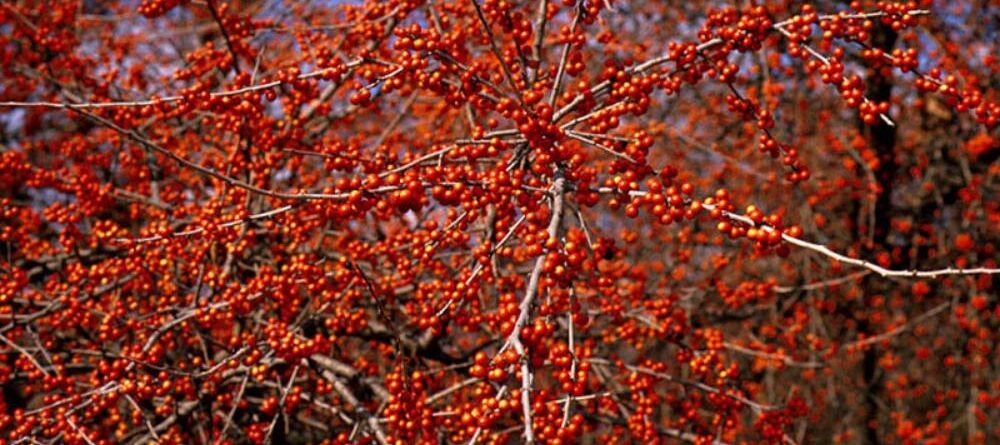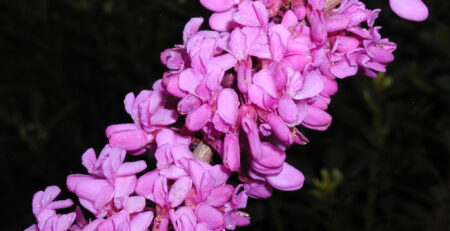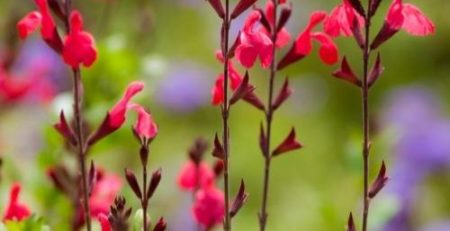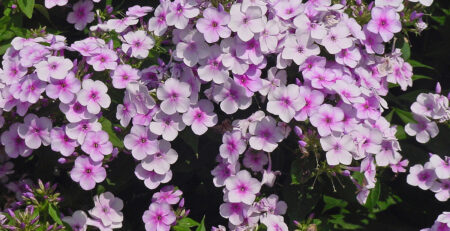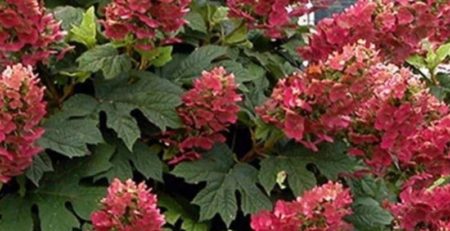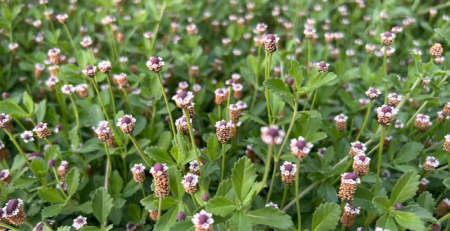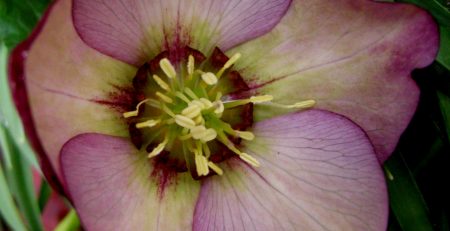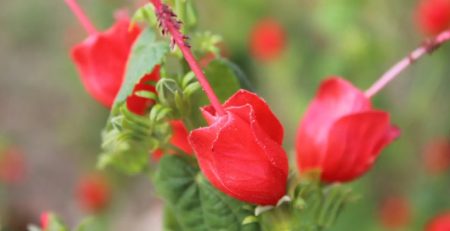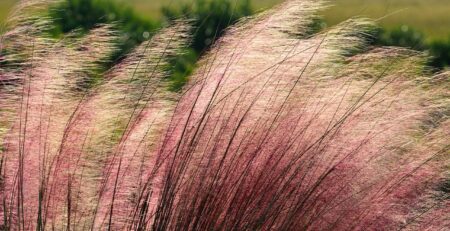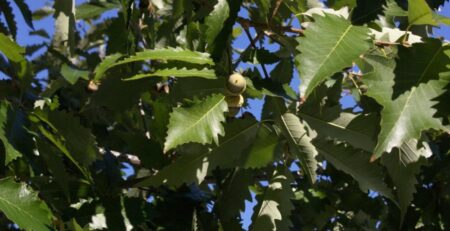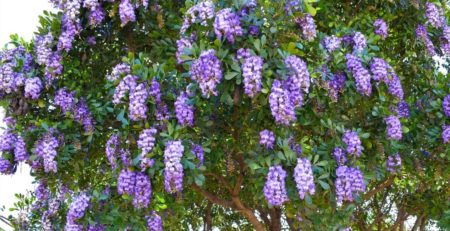Possumhaw Holly (Ilex decidua)
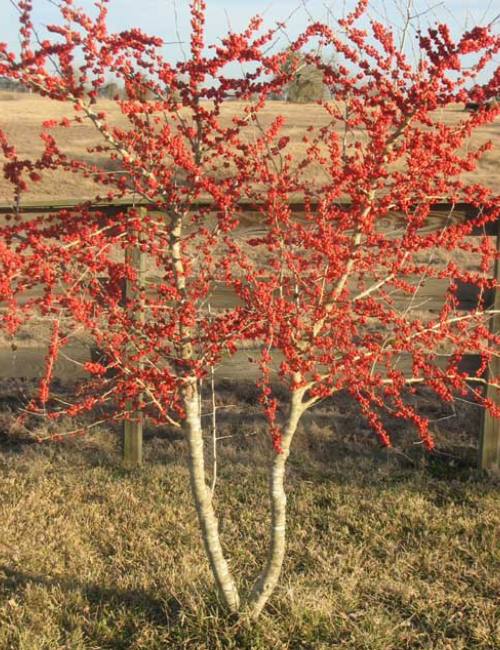
Botanical Name: Ilex decidua
Common Name: Possumhaw, Possumhaw Holly, Deciduous Holly, Meadow Holly, Prairie Holly, Swamp Holly, Welk Holly, Deciduous Yaupon, Bearberry, Winterberry
Synonyms: Ilex longipes
Category: Shrub
Family: Aquifoliaceae
Lifecycle: Perennial
Alt Lifecycle:
USDA Symbol: ILDE
Hardiness Zone North: 5A
Hardiness Zone South: 9B
Sun Requirement: Full Sun (6+ hours of sun per day)
Sun Requirement (Alt): Partial Shade (2-4 hours of sun per day)
Water Requirement: Medium
Growth Rate: Moderate
Maintenance: Low
Plant Adult Height: 15-30ft.
Plant Adult Spread: 15-25 ft.
Plant Spacing: 6-10 ft.
Soil Preference: Adaptable
Soil pH Preference: Slightly Acidic (6.1-6.5)
Propagation: Seed, Stem Cutting
Leaf Retention: Deciduous
Flowers: Insignificant
Flower Time: Spring
Attracts: Bees, Birds, Butterflies
Resists: Rabbit, Deer, Disease
Tolerates: Freeze, Drought, Clay Soil, Dry Soil, Heat
Other: Native, Tolerates Poor Soil
Description: The Possumhaw Holly, or “Ilex decidua”, is a deciduous shrub known for its impressive display of bright red berries during the winter months. These small, bright berries are persistently visible after the plant has shed its leaves for the season and create a stunning contrast to a sleepier winter garden landscape. The Possumhaw Holly typically blooms with small white flowers in the spring around May and June. Proper care for the Possumhaw Holly includes a full sun to part shade environment and well-drained soil. It is important to note that although the Possumhaw Holly is drought tolerant once established, it prefers moist, acidic soils for optimal growth and berry production. An added benefit of the Possumhaw Holly is its resistance to deer, making it an excellent choice for those who struggle with such garden intruders. As an attractant, it provides food for birds and small mammals with its plenitude of berries and is additionally a host plant for the Henry’s Elfin butterfly. Its tolerance of various soil conditions extends from clay to loamy and sandy, making it flexible across various garden landscapes. Despite its many advantages, the Possumhaw Holly may spread through suckering and could be seen as potentially invasive if not adequately supervised. On another note of caution, while the berries are not harmful to birds or small mammals, they are poisonous if ingested by humans. As such, the plant should be carefully placed in a garden, providing a vibrant pop of seasonal color while positioned away from play areas or frequently travelled paths to ensure safety. Its robust and versatile characteristics make the Possumhaw Holly an excellent choice for hedging, screen planting, or as a standalone specimen in a variety of landscapes.
Propagation & Planting: To propagate Possumhaw Holly, use 4-6 inch stem cuttings taken in late winter or early spring when the plant is dormant. Be sure to select healthy, mature wood from the previous season’s growth. Dip the cut end in a rooting hormone and plant it in a mixture of half perlite and half peat moss, maintaining high humidity conditions. Once cuttings have rooted, pot them individually in a well-draining potting mix. Plant them outdoors when they are well-established and the risk of frost has passed; ensure the soil is well-drained as Possumhaw Holly prefers consistently moist, but not waterlogged, soil. Prepare the planting site by loosening the soil to twice the width of the root ball and to the same depth. Position the plant, ensuring that the top of the root ball is flush with the soil surface, then backfill the hole, firming the soil gently but thoroughly. Water thoroughly and apply a layer of mulch around the planting area to conserve moisture and prevent weed competition. Possumhaw Holly is best suited to public landscapes, naturalized areas, and wildlife gardens rather than small residential gardens due to the female plant’s potential to drop a large quantity of berries. It is not typically grown as a houseplant.
Plant Care: Possumhaw Holly requires full sun or partial shade for optimal growth and prefers an evenly moist, well-draining soil, but it can withstand short periods of dry soil, thus making it drought-resistant. In the spring season, apply a balanced, slow-release fertilizer to encourage growth. Pruning should be minimal and used primarily for shaping; the best time is in late winter or early spring as this plant blooms on new wood. During the summer, regular watering will enhance the plant’s vigor, but avoid persistent waterlogged conditions. The plants are wind-resistant and can endure wintry conditions, implying no special winter care is required. However, root mulching can help maintain soil temperature and moisture levels. They are highly resistant to diseases and pests, but in case of any infection, a relevant pesticide or fungicide can be applied. Note that it is a dioecious plant, which means it has male and female plant types; for the best berry display you’ll need to have a male plant nearby to ensure pollination. The Possumhaw Holly is generally not used as a common houseplant but adds year-round interest to outdoor gardens due to its vibrant berries and attractive foliage.
Fertilize: Possumhaw Holly requires full sun or partial shade for optimal growth and prefers an evenly moist, well-draining soil, but it can withstand short periods of dry soil, thus making it drought-resistant. In the spring season, apply a balanced, slow-release fertilizer to encourage growth. Pruning should be minimal and used primarily for shaping; the best time is in late winter or early spring as this plant blooms on new wood. During the summer, regular watering will enhance the plant’s vigor, but avoid persistent waterlogged conditions. The plants are wind-resistant and can endure wintry conditions, implying no special winter care is required. However, root mulching can help maintain soil temperature and moisture levels. They are highly resistant to diseases and pests, but in case of any infection, a relevant pesticide or fungicide can be applied. Note that it is a dioecious plant, which means it has male and female plant types; for the best berry display you’ll need to have a male plant nearby to ensure pollination. The Possumhaw Holly is generally not used as a common houseplant but adds year-round interest to outdoor gardens due to its vibrant berries and attractive foliage.
Prune: Begin pruning the Possumhaw Holly in late winter or early spring, before new growth starts, although it is important to note that this shrub can withstand pruning at any time of the year without severe consequences. Avoid pruning extensively after spring growth has begun, as this can remove potential flower buds and diminish the plant’s berry display in the next winter. When pruning, focus on removing any dead, damaged or diseased branches first. Proceed to prune for shape and structure, maintaining its natural form. Overly aggressive or unnecessary pruning will affect the plant’s aesthetic appeal and could stunt berry production. While a common plant in the wild, the Possumhaw Holly is not typically utilized in residential gardening or landscaping environments, and it is not common as a houseplant.
Pest & Disease: The Possumhaw Holly can occasionally be affected by several pests and diseases. Common insect pests to watch for include leafminers, which leave mine-like channels in leaves, and spider mites, which can cause an unhealthy yellowing from their feeding. Physical removal or use of an insecticidal soap sprayed on plant surfaces can manage these pests effectively. Scale insects are usually identified by the small, stationary bumps on stems or leaves that they create. Horticultural oil, neem oil, or an insecticide containing dinotefuran can be effective treatments for scales. Possumhaw is also susceptible to a few diseases such as leaf spot and powdery mildew. Leaf spot can be noticeable as brown spots or areas of dead tissue and is best controlled by removing infected leaves and applying a copper-based fungicide spray. With powdery mildew, a common symptom is a white powdery substance on leaves or stems – for control, prune to improve air circulation and consider use of a sulfur-based fungicide. Regular plant monitoring, proper sanitation, and timely treatment are crucial to maintain the health of Possumhaw Holly.
PlantTAGG® is the most technically advanced mobile solution for helping gardeners learn about and care for their plants. PlantTAGG’s goal to educate gardeners blends seamlessly with the mission of the Master Gardener program to provide research-based horticultural information to the residents of Dallas County and beyond. To set up your own yard, download the PlantTAGG app.

